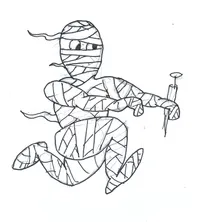Palaeogenomics
Allaby Research Group
Palaeogenomics is an exciting new field of ancient DNA research that represents a quantum leap in what is achievable with this data type. The technique uses the 454 sequencing technology to generate mega base amounts of DNA data. This approach has been used to great effect with mammoth samples (13 Mbp on first publication), and on Neanderthal samples. In the long term this technique will be used to study how genomes have changed over recent time scales, including how selection may have changed the genome at agronomically important loci and in general architecture.

Palaeogenomics of ancient Egyptian cotton
Palaeogenomic analysis has generated an unprecedented amount of genomic information from cotton samples from ancient Egypt and South America of up to 4500 years of age. This has facilitated species diagnosis which was not possible from the morphology of the archaeobotanical samples.
The Gossypium genus has been undergoing genome expansion associated with retrotransposon activity in most of its genomic lineages, and there has been some suggestion that the process is ongoing. We are applying the new technique of palaeogenomics to look for signs of genome change over the past few thousand years, including retrotransposon activity and evidence for selection.
